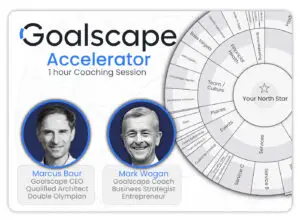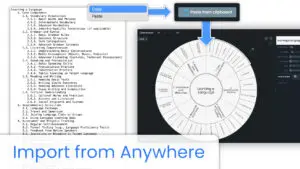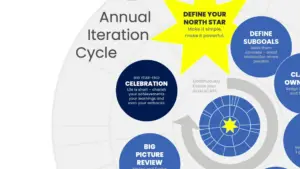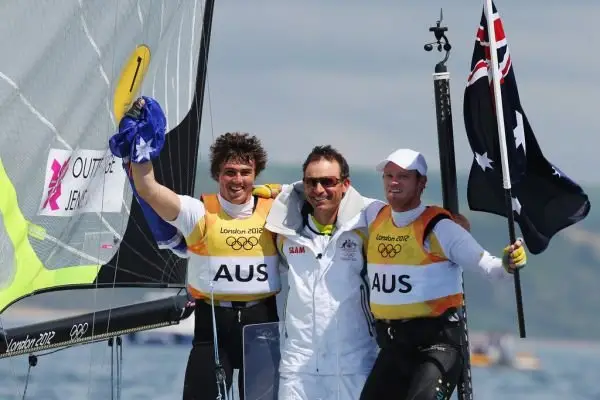
Sydney 2000 was the first time I coached Olympic Gold Medal winning athletes. Thomas Johanson and Jyrki Järvi from Finland won the 49er class event by a large margin. Back in 2000, I only started working with those boys a few months before the Games. Immediately after it was over, I reflected on what happened and considered what it would take for anyone to reproduce that glorious result.
Raw talent is a huge advantage in this sport; but victory in Olympic sailing requires much more. Imagine a competitive environment where the field of play is more dynamic and less predictable than your 25 other human opponents. You and your partner are both piloting your craft: one person steers, while the other works the engine throttle. If you do not coordinate your body movements perfectly for any change in direction or speed, you will slow down or even crash.
Even when you make all the right movements and decisions, if you are inaccurate with the speed settings for your craft (initial set-up and adjustments during the race), then you certainly ain’t winning anything on the big stage.

So proper preparation takes a lot of effort and attention to detail; and this is not just a matter of ‘checking all the boxes’. Actually I don’t believe it is possible to check all the boxes in sailing, since there are far too many uncontrollables. Yet we certainly need some methodical way to create order out of possible chaos.
So as a rookie coach in September 2000, I knew that a lot of ingredients had fallen into place. I felt very fortunate to be a part of Thomas and Jyrki’s victory.

I started coaching Nathan Outteridge in 2006; and from 2007 I was also working on what became the first truly solid version of Goalscape.
In January 2008, Nathan and crew Ben Austin won the 49er World Championship. Then they came ever so close to winning Gold in the Beijing China Olympics. People who compete at top level in annual sporting events probably cannot truly comprehend the disappointment we felt, knowing both the years we put in and that we had to work for another 4 years to have another crack at it. We came away from that losing experience much stronger and much wiser.
In August 2012, Nathan Outteridge and Iain Jensen from Australia won the 49er class Olympic Gold medal. Again by a large margin. And in the four years before the Games they had won 3 World Championships (they were 2nd in the other one). For me as their coach this was a totally different mission and journey.
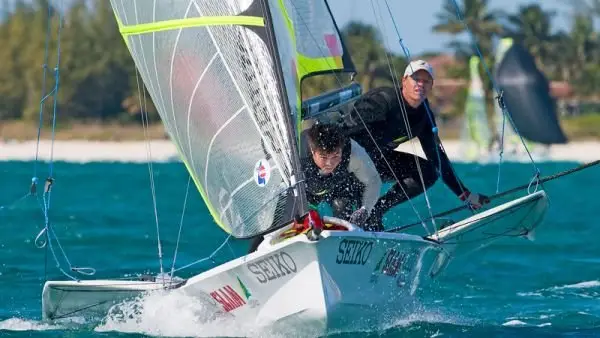
In early 2009, Nathan teamed up with Iain. For the following 3½ years, our every plan, action and thought was considered in the context of the London 2012 event. This is where Goalscape came to my personal rescue.
Firstly, Goalscape allows me to define clear, simple philosophies and strategies that enable me to stay focused and do all the important things.
Secondly, everything significant that I must know or do is stored in a Goalscape. Everything, in every different area in which we need to excel.
Information overload is a big problem in this job. Goalscape helps me stay on top of this: It is my visual index to knowledge, data, history and essential performance related ingredients.
I cannot show you a real example of our campaign strategy goalscapes because they are private and valuable intellectual property. Instead here is an example goalscape that I use to help guide myself when I need to make tough decisions. In the next week or two, I shall post a followup blog outlining the simple process for creating a sport strategy goalscape.
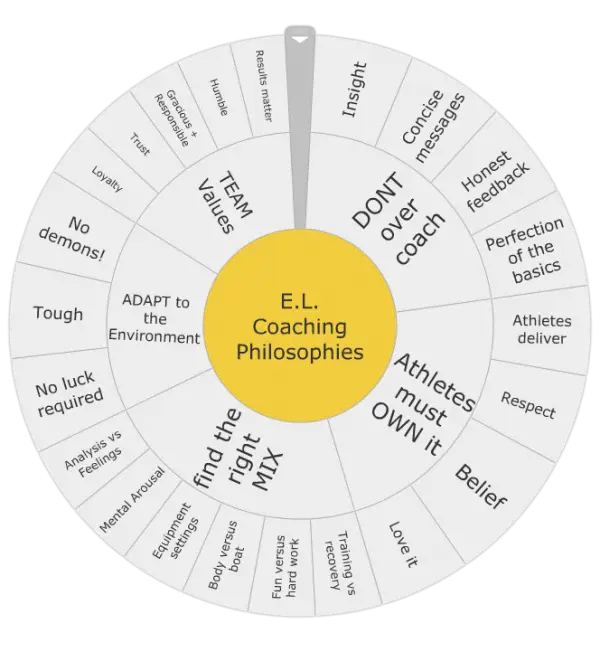
In 2009, the online project sharing function of Goalscape was not ready, yet I desperately needed to share certain Goalscape projects with Nathan and Iain. The obvious solution was for me to use Goalscape on their behalf. I produced simple goal map views to help them to be effective at dealing with the present, while maintaining awareness of where they want to go. For the remainder of the campaign, we continued to operate like this: using Goalscape for our high level performance strategy and for tracking every little milestone in the 4 year Olympic cycle. Below is a goalscape from Marcus showing progress made for one category of skills.
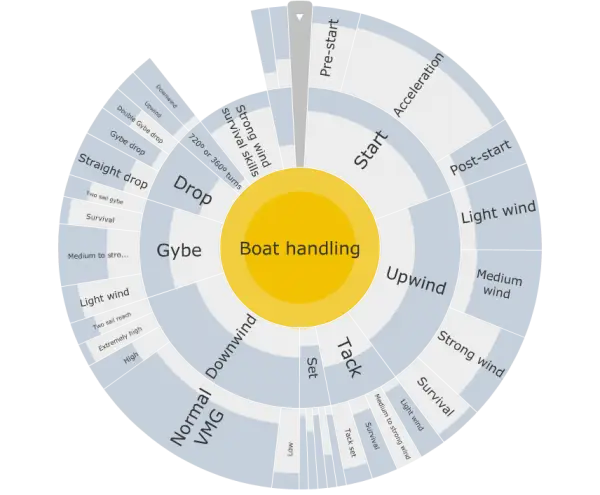
When using a Goalscape view (of our high level strategy) as the basis for periodic performance review meetings with team management and support staff, a pleasant surprise was how brief and happy these meetings were. We could complete our reviews in 45 minutes, while other teams typically needed 2 or 3 hours. Follow-up work was quicker and easier too. During the session I’d update the relevant goalscape or goal, so the write-up was done instantly and everybody left the meeting knowing what they had to do next.
After these meetings, I was occasionally told how highly organised we were. That was such a lovely compliment considering that using Goalscape felt like taking an easy shortcut.
Not all data or problems fit right into the Goalscape format. I still make very extensive use of spreadsheets to store and crunch numbers for quantitative work. And for short and/or sequential presentations, slides work just fine.
I gravitate toward a clean visual structure. It is my primary learning style for understanding, remembering and communicating complex information. Obviously not everything is hierarchical; after using Goalscape for a while though, it’s surprising how often a hierarchical structure does fit.
Today I’m making more use of Goalscape for presentations. I find it works well when the subjected being taught is too big and/or the discussions too dynamic for a set of sequential slides. With Goalscape I’m better equiped to let audience feedback drive the session more, so I focus better on what people want to learn.
Goalscape is still evolving. We are working on usability and presentation enhancements, easier sharing of goals with new users and accessing goals on tablets and other mobile devices. All of these changes will increase Goalscape’s value – and of course cement it as a key component in my coaching workflow.


